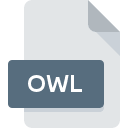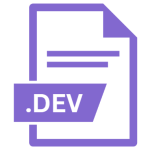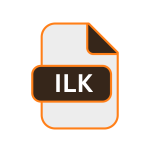.OWL File Extension

OWL Source Code File
| Developer | N/A |
| Popularity | |
| Category | Developer Files |
| Format | .OWL |
| Cross Platform | Update Soon |
What is an OWL file?
OWL, standing for Web Ontology Language, is a semantic markup language for publishing and sharing ontologies on the World Wide Web.
These ontologies capture knowledge about specific domains and are utilized by various applications to infer logical conclusions.
.OWL files serve as the source code containers for OWL ontologies, housing the definitions, axioms, and relationships that constitute the ontology’s structure.
More Information.
The inception of OWL can be traced back to the early 2000s when the W3C’s Semantic Web initiative aimed to enable machines to understand and process the vast amount of information available on the web.
OWL was designed to provide a richer and more expressive vocabulary for creating ontologies compared to its predecessors, enabling more precise and detailed knowledge representation.
Initially, .OWL files were primarily used in academic and research settings, where ontologies played a crucial role in fields such as bioinformatics, knowledge management, and semantic web applications.
Over time, the adoption of OWL expanded into various industries, including healthcare, finance, and e-commerce, where ontologies facilitate data integration, interoperability, and reasoning tasks.
Origin Of This File.
The development of OWL stemmed from the need to enhance the capabilities of its predecessor, the Resource Description Framework (RDF), in representing knowledge on the web in a machine-readable format.
The OWL language was standardized by the World Wide Web Consortium (W3C) in 2004, with subsequent revisions and improvements leading to the current OWL 2 specification.
File Structure Technical Specification.
OWL source code files follow a structured format defined by the OWL language specification. They typically consist of declarations, axioms, and annotations that define classes, properties, individuals, and logical relationships within the ontology.
The syntax of .OWL files adheres to the RDF/XML or Turtle serialization formats, providing a machine-readable representation of the ontology.
The technical specification of .OWL files encompass various constructs and features supported by the OWL language, including:
- Classes: Represent entities or concepts within the domain of discourse.
- Properties: Define relationships between classes or individuals.
- Individuals: Refer to specific instances or members of classes.
- Axioms: Capture logical assertions or constraints within the ontology.
- Annotations: Provide metadata or documentation about ontology components.
OWL source code files may also incorporate imports to include other ontologies or external resources, facilitating modularity and reuse.
How to Convert the File?
Converting .OWL files to other formats or vice versa often involve tools or libraries that support OWL ontology serialization and parsing. Common conversion tasks include:
- OWL to RDF/XML or Turtle: Many ontology editors and development environments offer built-in functionality to export OWL ontologies to standard RDF/XML or Turtle serialization formats.
- RDF/XML or Turtle to OWL: Similarly, tools capable of parsing RDF/XML or Turtle files can be used to import ontologies into OWL-compatible formats.
- OWL to other Semantic Web Standards: OWL ontologies can be transformed into other semantic web standards such as RDF Schema (RDFS) or Simple Knowledge Organization System (SKOS) using appropriate conversion utilities.
Advantages And Disadvantages.
Advantages:
- Semantic Interoperability: OWL ontologies enable consistent and standardized representation of knowledge, fostering semantic interoperability across disparate systems and applications.
- Reasoning Capabilities: OWL supports automated reasoning and inference, allowing software agents to derive new knowledge from existing ontologies.
- Scalability: .OWL files can accommodate large and complex ontologies, making them suitable for modeling diverse domains and domains.
Disadvantages:
- Complexity: OWL’s expressiveness and flexibility come at the cost of increased complexity, requiring users to possess a solid understanding of ontology modeling principles and OWL semantics.
- Performance Overhead: Inference and reasoning processes in OWL-based systems may incur computational overhead, particularly when dealing with large ontologies or complex logical constructs.
- Learning Curve: Mastering OWL ontology development and maintenance requires time and effort, especially for users unfamiliar with semantic web technologies.
How to Open OWL?
Open In Windows
- Protégé: Download and install Protégé, an open-source ontology editor available for Windows. Launch Protégé, then use the “File” menu to open your .OWL file.
- TopBraid Composer: Install TopBraid Composer, a comprehensive ontology modeling tool for Windows. Open the software, then import your .OWL file using the appropriate option in the menu.
- Programming Libraries: Utilize programming languages like Java and libraries such as OWLAPI to develop custom applications capable of parsing and displaying OWL files on Windows.
Open In Linux
- Protégé: Protégé is also available for Linux distributions. Install it through your package manager, then launch the software and open your .OWL file.
- TopBraid Composer: Similar to Windows, you can install TopBraid Composer on Linux systems and use it to open and work with OWL files.
- Programming Libraries: Use OWLAPI or other relevant libraries within your preferred programming language to handle OWL files programmatically on Linux.
Open In MAC
- Protégé: Protégé is compatible with macOS. Download and install it, then open your .OWL file through the Protégé interface.
- TopBraid Composer: TopBraid Composer supports macOS as well. Install it on your Mac, then import and work with your .OWL file within the application.
- Programming Libraries: Leverage OWLAPI or other suitable libraries in macOS-compatible programming languages like Java to interact with OWL files.
Open In Android
- Utilize cloud storage services to access OWL files stored online and view them using compatible applications.
- Develop custom Android applications using programming languages like Java and incorporate libraries such as OWLAPI for parsing and displaying OWL files.
Open In IOS
- Accessing OWL files stored in cloud storage through compatible iOS applications.
- Developing custom iOS applications using programming languages like Swift and integrating libraries or APIs for handling OWL files.
Open in Others
- Explore cross-platform ontology editing tools that offer support for a wide range of operating systems.
- Develop custom solutions tailored to the specific requirements of the operating system, utilizing programming languages and libraries conducive to the platform’s environment.













